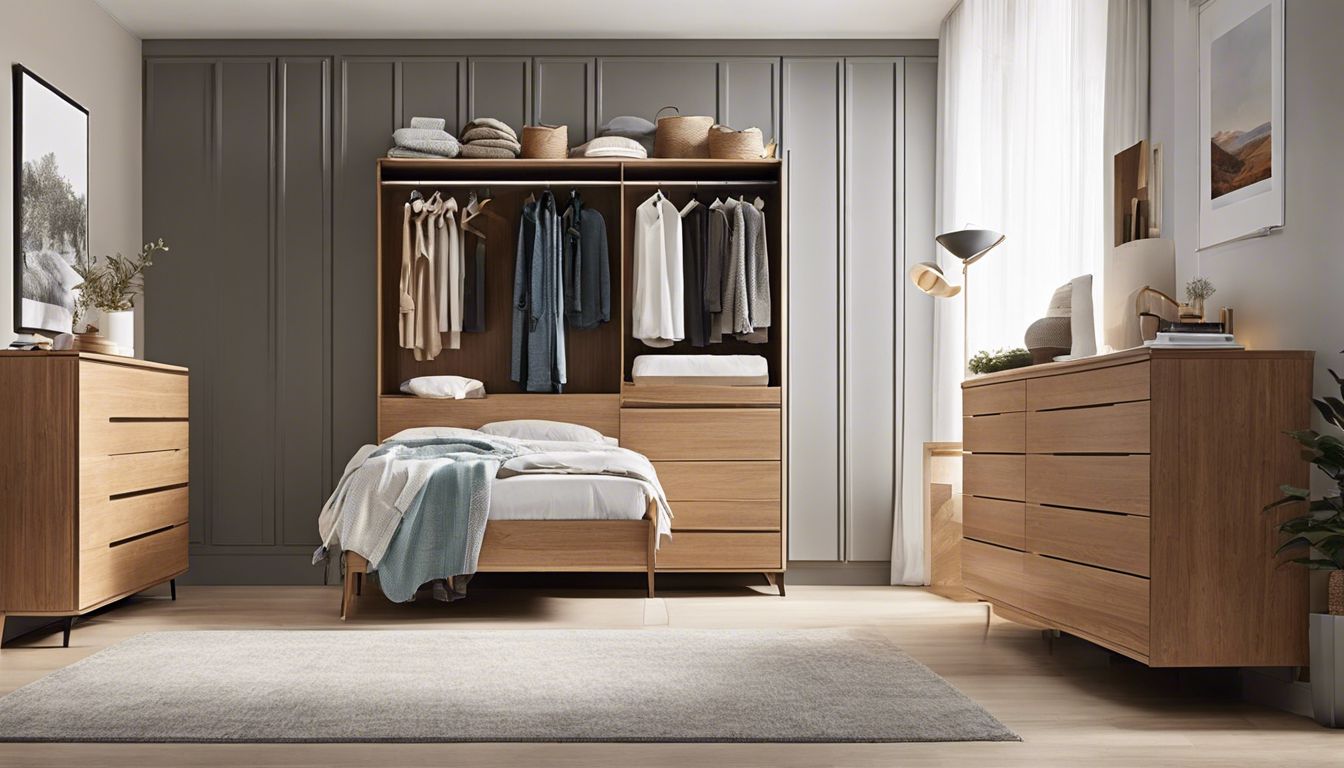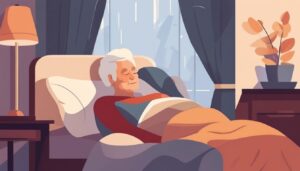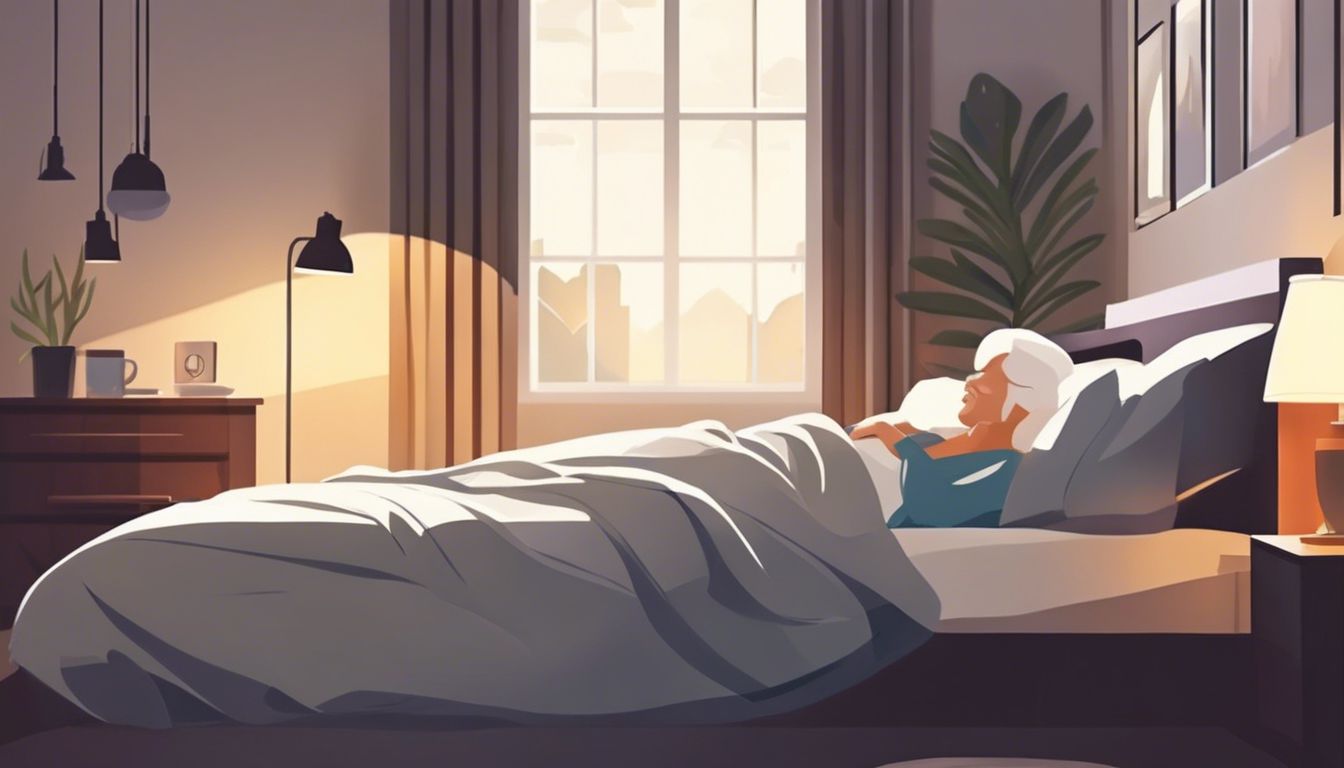Adaptive clothing for those with limited movement makes dressing easier and safer. Key features include magnetic snaps for shirts and Velcro straps on shoes to help avoid the struggle with buttons and laces.
Easy Closures and Fastenings
Clothes with easy closures make dressing simpler for seniors with limited movement. Magnetic buttons and Velcro tabs ensure they can dress without struggles. These fastenings are perfect for those who find traditional buttons hard.
Magnetic closures and Velcro tabs transform dressing into a simple task, promoting independence and self-care.
These features offer easier access and reduce the risk of falls, as seniors won’t have to bend or twist to get dressed. Brands focusing on adaptive clothing understand this need well, creating garments that combine functionality with style.
Soft and Comfortable Fabrics
Choosing the right fabrics is key for seniors with limited mobility. Breathable cotton, smooth silk, cozy flannel, and durable synthetic blends offer comfort and ease. These materials are gentle on the skin, reducing irritation.
They also help in managing temperature, keeping the wearer cool or warm as needed.
Fabrics like breathable cotton are perfect for everyday wear. They allow air to circulate, preventing discomfort from heat or sweat. Synthetic blends add durability and easy care, making these clothes last longer without extra effort.
By selecting outfits made from these materials, caregivers ensure both comfort and practicality for their loved ones’ wardrobe.
Adjustable Sizing and Fit
After choosing fabrics that are soft and comfortable, the next essential feature in adaptive clothing is adjustable sizing and fit. This allows clothes to adapt to various body sizes, ensuring a perfect fit for seniors with limited mobility.
Elastic waistbands make trousers easy to put on and take off. They help in reducing pressure on the skin, increasing comfort throughout the day. Seated dressing options offer solutions for wheelchair users, making it simpler for them to dress independently or with minimal assistance.
Clothes designed with adjustable features support mobility and dexterity. For example, Velcro closures instead of buttons provide easier access for dressing and undressing. Such adaptations are crucial in promoting independence among seniors.
These features also play a significant role in fall prevention by eliminating loose-fitting clothes that can catch on objects and cause trips or falls. By selecting dresses, sweaters, or shirts with these adjustable options, caregivers can enhance the well-being of their loved ones under assisted living or long-term care conditions.
Seated Dressing Options
Seated dressing options make life easier for seniors with limited mobility. Clothes that open in the back or on the side help a lot. These designs are perfect for people who spend a lot of time in wheelchairs.
They can dress without standing up. Magnetic buttons, Velcro closures, and extended zippers are smart choices here. They allow quick and safe dressing and undressing.
Now, let’s look at how elastic waistbands and pull-on designs support independence.
Design Considerations for Enhanced Mobility
For better moving, think about stretchy waistbands and tops that are easy to pull on. This makes it simple for seniors to dress without help. Check out more styles that could make life easier for them.
Elastic Waistbands and Pull-On Designs
Elastic waistbands make getting dressed easier for seniors with limited dexterity. Pull-on designs reduce the need for help from others.
- Elastic waistbands adjust to fit changing body sizes, ensuring comfort all day.
- Pull-on pants and skirts allow seniors to dress without struggling with buttons or zippers.
- Drawstring closures offer an alternative that’s easy to use, providing a secure fit.
- Footwear with elastic features or Velcro closures complements pull-on designs by simplifying the process of putting on shoes.
- High-quality, stretchable fabrics in these clothes support movement and reduce discomfort.
- Open-back shirts and dresses pair well with elastic waistbands and pull-on bottoms for complete dressing solutions.
- Wide-leg openings in pants ensure that individuals can dress easily while seated or lying down.
- Adaptive garments with these features often come in various styles, allowing seniors to maintain their personal style while benefiting from the convenience.
Next, let’s look at how these adaptive clothing options enhance daily living through increased mobility and reduced reliance on caregivers.
Shoes with Velcro Closures
Shoes with Velcro closures make dressing easier for seniors with limited mobility. They ensure safety and support mobility without the need to tie shoelaces.
- Velcro shoes prevent trips and falls, a common concern in elderly care. They are slip-resistant, providing more stability.
- Seniors with arthritis or reduced hand dexterity find Velcro closures simple to use. This design eliminates the struggle with small, intricate shoelaces.
- Healthcare professionals often recommend Velcro shoes for those in long-term care facilities. These shoes support independence in daily dressing routines.
- Caregivers appreciate the quick and easy fastening of Velcro shoes. It speeds up the dressing process in assisted living situations.
- Many designs come with adjustable straps. This allows for a custom fit, accommodating changes in foot size due to swelling.
- Velcro sneakers are available from brands like Joe & Bella, designed specifically for senior needs. These brands focus on comfort and functionality.
- For seniors dealing with cognitive decline or Alzheimer’s disease, these shoes reduce frustration associated with getting dressed.
- Podiatrists suggest using shoes with wide openings and Velcro closures for people with bunions or other foot problems. This ensures less pressure on sensitive areas.
- Occupational therapists find that velcro footwear can be part of therapy plans. They enhance seniors’ mobility and encourage them to dress independently.
- Memory care units use velcro shoes to help residents maintain some level of autonomy. It is part of promoting a healthier lifestyle through simpler daily tasks.
These features make it clear that Velcro closure shoes are essential for seniors. They offer comfort, safety, and independence all at once.
Adaptive Shirts and Tops
After exploring shoes with Velcro closures, we move to adaptive shirts and tops. These garments are key for seniors who need ease and comfort in dressing.
- Adaptive shirts offer front-closing designs. This feature makes it simpler for caregivers to help seniors put on and take off their clothes.
- Many adaptive tops use magnetic closures instead of traditional buttons. Magnets allow for quick and easy dressing, reducing frustration for those with limited hand dexterity.
- The design includes minimal seams and wider openings. Less friction on the skin means more comfort throughout the day.
- Fabrics chosen for these shirts are soft to touch. They often include microfiber and moisture-wicking materials, keeping the wearer dry and comfortable.
- Open-back styles in some shirts enhance ease of dressing from a seated position. This is important in care homes where assisted dressing is common.
- Versatile sizing options ensure a proper fit, catering to changes in body shape or weight that can come with aging or medical conditions.
- Some tops are specifically designed to accommodate medical equipment, like braces or hearing aids, making them practical for daily wear.
- Assistance in dressing promotes independence and supports mental well-being by allowing personal choice in clothing.
Each feature of adaptive shirts and tops aims to provide comfort, maintain dignity, and support the physical needs of seniors with limited mobility.
Benefits of Adaptive Clothing for Seniors with Mobility Issues

Adaptive clothing helps seniors move better and stay safe. It makes dressing up easier, boosting their confidence to do things on their own.
Promoting Independence
Clothes with easy closures empower seniors to dress by themselves. This boosts their independence and self-esteem. Seniors feel proud when they can wear their own clothes without help.
These garments include features like hook-and-loop fasteners instead of buttons, making dressing easier for those with limited hand dexterity.
Offering clothes that seniors can put on while sitting down also supports their independence. This is crucial in long-term care or at home for seniors with mobility issues. Adaptive clothing helps them stay active and involved in choosing what to wear each day, promoting a sense of dignity and well-being.
Enhancing Comfort and Safety
Adaptive clothes make life easier and safer for seniors with mobility issues. Slip-resistant shoes and elastic waistbands help avoid falls, enhancing safety. Moisture-wicking fabrics keep skin dry, preventing irritations.
These features are key for Alzheimer’s patients and those in end-of-life care needing extra comfort.
Adaptive clothing promotes both independence and safety, improving the quality of life.
Supporting Mobility and Dexterity
Moving from enhancing comfort and safety, adaptive clothing also makes daily activities easier for seniors. Clothes with Velcro closures, magnetic buttons, and elastic waistbands help them dress without struggle.
These features lessen the need for complex moves that can be hard for someone with limited mobility or dexterity.
For example, pulling on pants with an elastic band doesn’t require standing up or balancing on one leg. Similarly, shoes with Velcro make it simple to put them on and take off without bending down too much.
Such designs ensure seniors maintain their independence while reducing the risk of falls during dressing or undressing.
Choosing the Right Adaptive Clothing
Picking the right adaptive clothing means thinking about what the person really needs and likes. It’s smart to talk with doctors or nurses and try different styles to find the best fit.
Consulting with Healthcare Providers
Talking to health care workers is a smart move for picking out adaptive clothing. These professionals know what works best for each unique situation, from managing arthritis to dealing with Alzheimer’s disease.
They can suggest clothes that make dressing easier and safer, like shirts with hook-and-loop closures or pants designed for seated dressing. This advice makes sure seniors stay comfortable and mobile.
Next up, consider the senior’s likes and daily life when choosing adaptive clothing.
Considering Personal Preferences and Needs
Picking the right adaptive clothing for seniors means looking at more than just their physical needs. It’s about making sure their clothes match who they are. Style plays a big role in how we feel, and it’s no different for someone with mobility issues.
Clothes that reflect personal taste can lift spirits and improve mental health.
Choosing clothes involves thinking about what someone likes to wear along with what they need for easy dressing. For example, if a person loves wearing blouses but struggles with buttons, look for options with hook and loop fasteners.
This way, they keep their style without the hassle. It’s also important to consider materials that are soft and don’t irritate the skin since comfort is key when dealing with long-term care or conditions like Alzheimer’s disease.
Always ask for their opinion before buying new clothes to make sure they will enjoy wearing them.
Trying Different Styles and Designs
Exploring various styles and designs is key to finding adaptive clothing that meets both comfort and functionality needs. Brands like Tommy Hilfiger, Target, Zappos, and Nike offer a range of options that cater to seniors with limited mobility.
- Look for open-back designs in shirts and dresses, which make dressing easier for those who spend most of their time seated or require assistance.
- Choose pants with adjustable waistbands, allowing for changes in size and providing ease in wearing them.
- Prioritize soft materials that reduce the risk of skin irritation, crucial for long-term wear and sensitive skin.
- Select footwear with Velcro closures to simplify the process of putting on shoes and ensure a secure fit without bending over.
- Explore undergarments with easy-access features, supporting independence in personal care tasks.
- Consider outerwear with large buttons or magnetic closures that are easier to handle for individuals facing challenges with dexterity.
- Test different inseam lengths in pants to find the best option that accommodates seating positions comfortably without bunching up.
- Investigate specialized options like custom insoles made to improve mobility and provide support while walking or standing.
- Search for adaptive accessories such as belts with easy closures to assist in achieving a secure fit of garments without complex fastenings.
- Consult healthcare providers for recommendations on adaptive clothing brands and items that align with specific health conditions or mobility issues.
By focusing on these elements, caregivers can ensure the selection of adaptive clothing enhances seniors’ comfort, safety, and independence.
Conclusion
Adaptive clothing must have easy closures, soft fabrics, and adjustable fits for seniors with limited mobility. These clothes let them dress without much help, making daily life better.
Brands like Tommy Hilfiger and Nike offer these special items. Cotton and bamboo give a skin-friendly touch. Options like open back shirts and Velcro shoes support independence and comfort.
Finding the right adaptive outfit means checking with doctors, understanding personal needs, and trying various styles. This approach to dressing helps seniors move better and feel good about themselves every day.
For further guidance on ensuring the safety and comfort of seniors at home, explore our comprehensive guide on how to select appropriate bathroom safety products for fall prevention.
FAQs
1. What is adaptive clothing for seniors with limited mobility?
Adaptive clothing refers to wearable items designed specifically for the elderly or those in long term care, making tasks like putting on clothes and underwear easier.
2. How does adaptive clothing support end-of-life care?
In palliative and end of life care, easy access clothes such as button-down shirts or pants with treads can offer comfort and ease for patients while also aiding family caregivers and carers in providing healthcare services.
3. Why is it important to have adaptive clothing in settings like nursing homes?
Nursing homes or skilled nursing facilities often house seniors with arthritic conditions or dementia who may struggle with normal clothes. Adaptive clothing ensures their comfort while promoting social connections by reducing dependency.
4. Can adaptive-clothing be covered by long-term care insurance?
Yes, some policies under long term care insurance cover costs related to essential needs like adaptive-clothing which aids aging in place effectively.
5. How has the fashion industry responded to the need for adaptive clothing?
The fashion industry recognizes this need and designs wearables that accommodate prostheses, provide easy access, yet remain stylish – enhancing dignity along with functionality for the elderly population.
6. Are there any evidence-based practices associated with using adaptive-clothing?
Evidence-based practices include integrative medicine approaches such as music therapy that when combined with use of comfortable, accessible wearables help improve quality of life during end-of-life support.









